SMU Data and Models
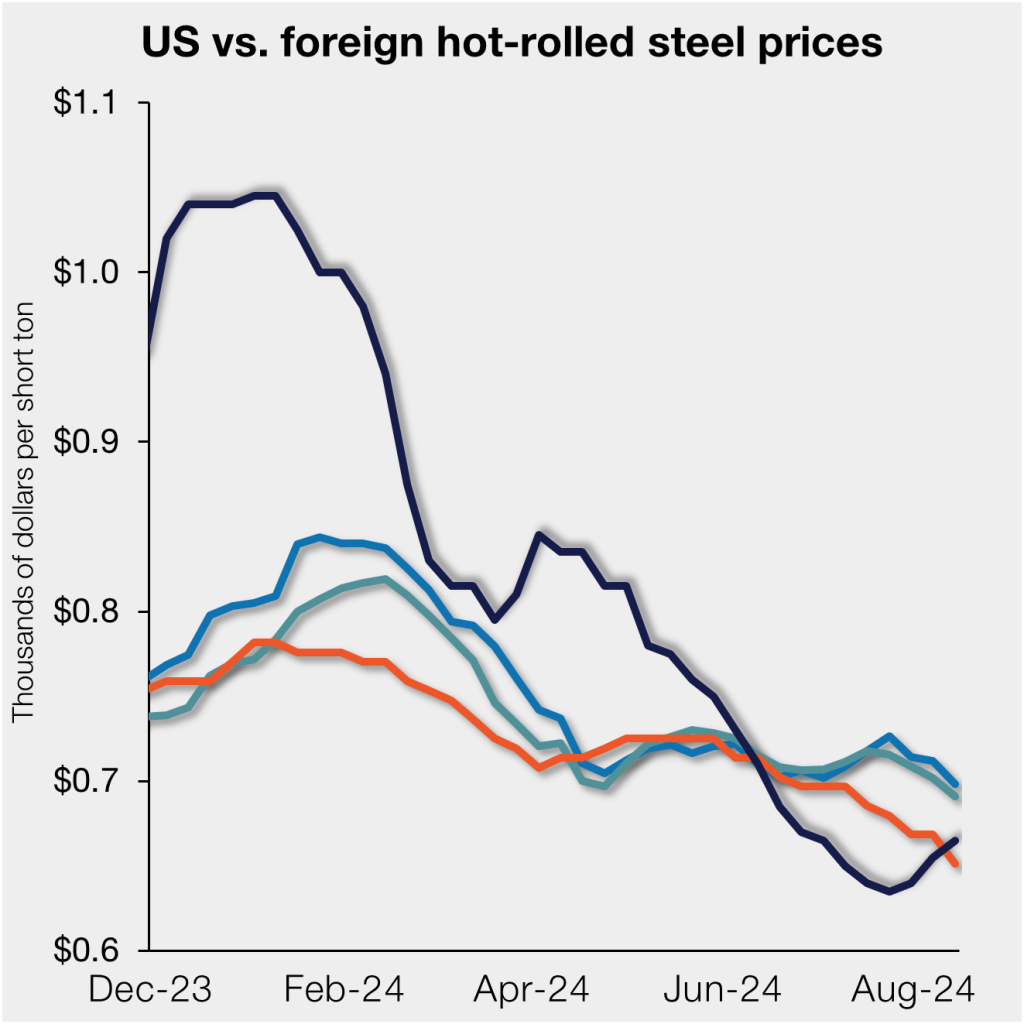
Domestic, imported HR prices near parity again
Written by David Schollaert
August 15, 2024
US hot-rolled (HR) coil prices are nearly even with prices for offshore material on a landed basis as domestic tags continue to inch up.
While HR is cheaper stateside, the price spread between domestic and foreign HR has moved closer to parity. The trend is supported by improving domestic prices on the heels of firmer US mill offers. (Visit SMU’s pricing calendar to keep track of the latest mill price announcements.)
SMU’s check of the market on Tuesday, Aug. 13, put domestic HR tags at $665 per short ton (st) on average, up $10/st from last week. Stateside hot band – still just $30/st from a 20-month low – remains $180/st below a recent high of $845/st in early April.
Domestic HR prices are now theoretically just 2.3% cheaper than imports. They were 6% cheaper last week.
In dollar-per-ton terms, US HR is now, on average, $15/st cheaper than offshore product (see Figure 1). That compares to $39/st cheaper on average last week. That’s a huge change from late last year, when US HR was often hundreds of dollars more than offshore material.
The charts below compare HR prices in the US, Germany, Italy, and Asia. The left-hand side highlights prices over the last two years. The right-hand side zooms in to show more recent trends.
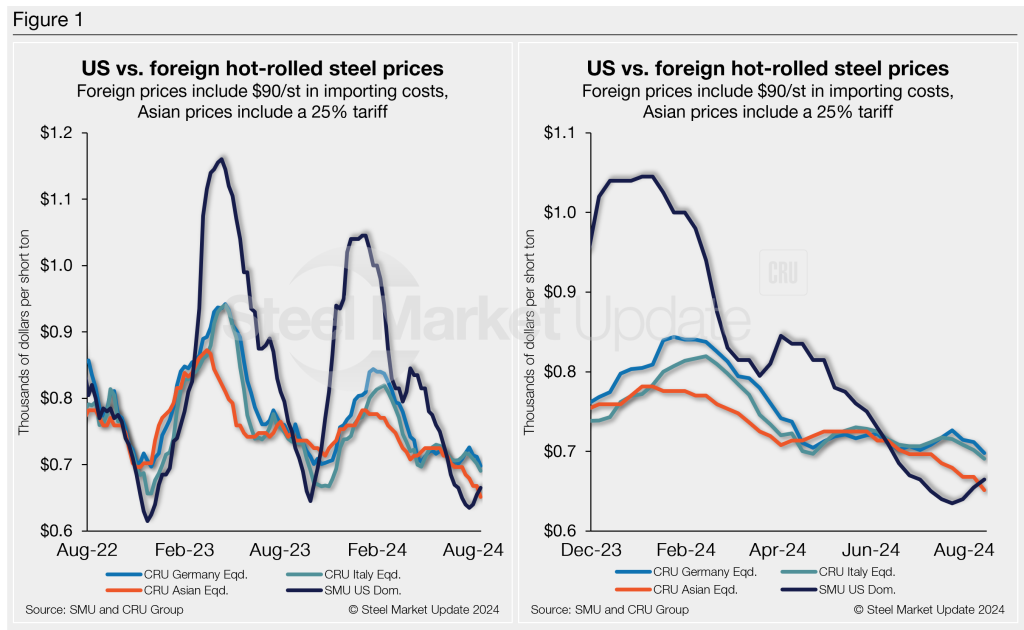
Methodology
This is how SMU calculates the theoretical spread between domestic HR coil prices (FOB domestic mills) and foreign HR coil prices (delivered to US ports): We compare SMU’s US HR coil weekly index to the CRU HR coil weekly indices for Germany, Italy, and East and Southeast Asian ports. This is only a theoretical calculation. Import costs can vary greatly, influencing the true market spread.
We add $90/st to all foreign prices as a rough means of accounting for freight costs, handling, and trader margin. This gives us an approximate CIF US ports price to compare to the SMU domestic HR coil price. Buyers should use our $90/st figure as a benchmark and adjust up or down based on their own shipping and handling costs. If you import steel and want to share your thoughts on these costs, please get in touch with the author at david@steelmarketupdate.com.
Asian HRC (East and Southeast Asian ports)
As of Thursday, Aug. 15, the CRU Asian HRC price was $449/st, down $14/st vs. the week prior. Adding a 25% tariff and $90/st in estimated import costs, the delivered price of Asian HRC to the US is approximately $651/st. This contrasts to the latest SMU HR average of $665/st for domestic material.
The result: US-produced HRC is theoretically $14/st more expensive than steel imported from Asia. That is up $27/st vs. last week. In late December, in contrast, US HR was $281/st more expensive than Asian product.
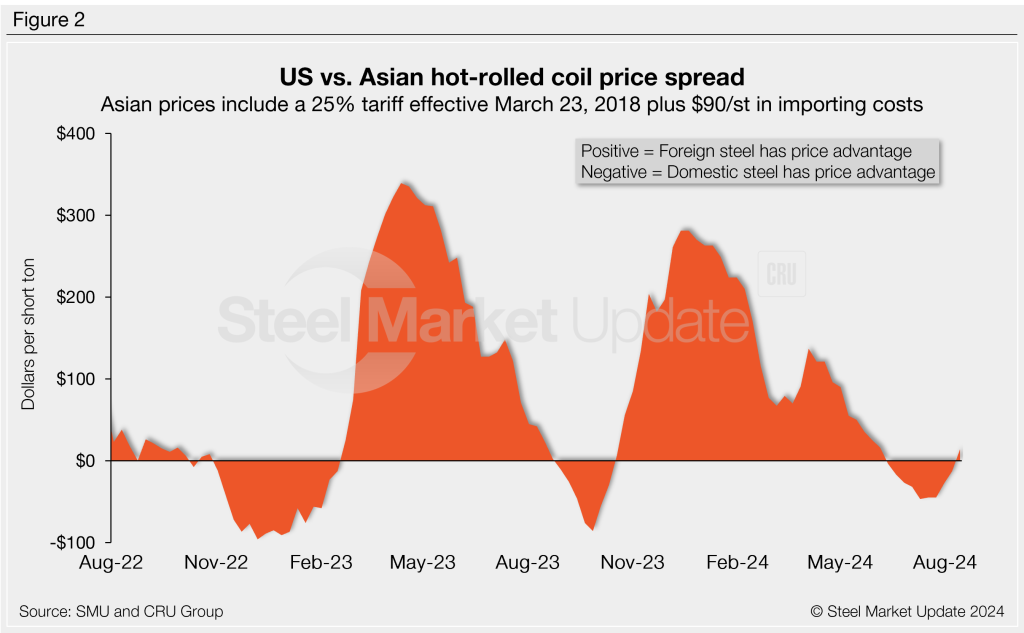
Italian HRC
Italian HR coil prices were down $11/st to roughly $601/st this week. After adding import costs, the delivered price of Italian HR coil is, in theory, $691/st.
That means domestic HR coil is theoretically $26/st cheaper than HR coil imported from Italy. That is down $21/st from last week. Just five months ago, US HR was $297/st more expensive than Italian hot band.
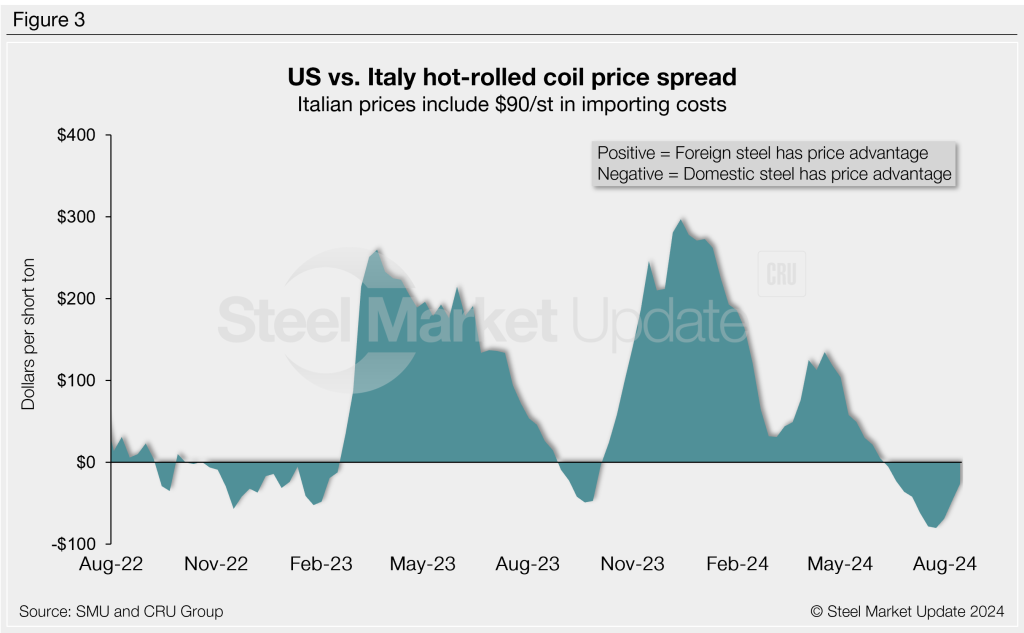
German HRC
CRU’s German HR price moved to $608/st, which is $14/st lower than last week. After adding import costs, the delivered price of German HR coil is, in theory, $698/st.
The result: Domestic HR is theoretically $33/st cheaper than coil imported from Germany, down from a $57/st discount last week. At points in 2023, in contrast, US HR was as much as $265/st more expensive than German hot band.
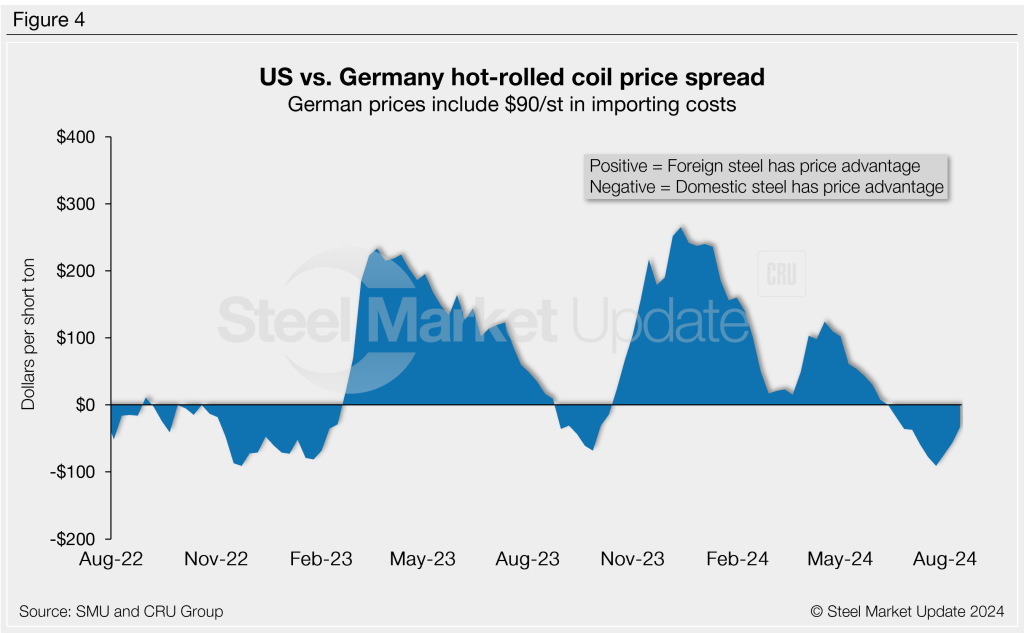
Notes: Freight is important when deciding whether to import foreign steel or buy from a domestic mill. Domestic prices are referenced as FOB the producing mill, while foreign prices are CIF the port (Houston, NOLA, Savannah, Los Angeles, Camden, etc.). Inland freight, from either a domestic mill or from the port, can dramatically impact the competitiveness of both domestic and foreign steel. It’s also important to factor in lead times. In most markets, domestic steel will deliver more quickly than foreign steel. Effective Jan. 1, 2022, Section 232 tariffs no longer apply to most imports from the European Union. It has been replaced by a tariff rate quota (TRQ). Therefore, the German and Italian price comparisons in this analysis no longer include a 25% tariff. SMU still includes the 25% Section 232 tariff on prices from other countries. We do not include any antidumping (AD) or countervailing duties (CVD) in this analysis.

David Schollaert
Read more from David SchollaertLatest in SMU Data and Models

SMU Survey: Sheet lead times ease further, plate hits one-year high
Steel buyers responding to this week’s SMU market survey report a continued softening in sheet lead times. Meanwhile, plate lead times have moderately extended and are at a one-year high.

SMU Survey: Buyers report more price flexibility from mills
Nearly half of the steel buyers responding to this week’s SMU market survey say domestic mills are showing increased willingness to negotiate pricing on new spot orders. This marks a significant shift from the firmer stance mills held in prior weeks.

SMU Survey: Buyers’ Sentiment Indices fall
Current Sentiment Index dropped six points to +42 this week compared to two weeks earlier. It has fallen in every successive survey since reaching a 2025 high of +66 on Feb. 19.

March service center shipments and inventories report
Steel service center shipments and inventories report through March 2024.

Apparent steel supply contracts in February
The amount of finished steel that entered the US market in February receded from January’s peak, according to our analysis of Department of Commerce and American Iron and Steel Institute (AISI) data.
